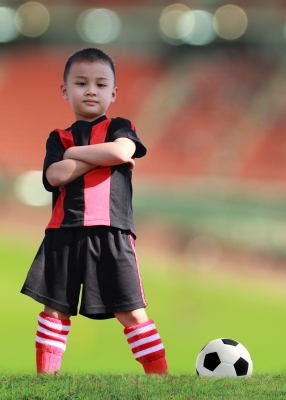How to Save Money on the Rising Cost of Organized Sports
Posted by Matt Roberts
Apr 11, 2014 3:50:00 PM
 Organized sports is now a trillion dollar business in this country. This is not an exaggeration. Marketers have even begun targeting participants "from the womb to the tomb," peddling products like Athletic Baby and Baby Goes Pro. Gymnasiums have also popped up for newborns with an eye on getting them to the pros, making personal trainers available for babies as young as six months.
Organized sports is now a trillion dollar business in this country. This is not an exaggeration. Marketers have even begun targeting participants "from the womb to the tomb," peddling products like Athletic Baby and Baby Goes Pro. Gymnasiums have also popped up for newborns with an eye on getting them to the pros, making personal trainers available for babies as young as six months.
Working class families have long seen sports as a ticket to the future, but the push to excel is a little overwhelming. From the time children can pick up a ball, parents see their child as competing against a multitude of other children for a very few select spots of recognition at the top. Getting into the scholarship pipeline has a much higher cost today than it ever has. Simply playing sports for your school doesn't cut it anymore. Parents are signing up for traveling teams, plopping down hundreds for expensive equipment, paying for personal trainers, elite sports camps, lodging expenses of food and hotels while traveling and sacrificing most, if not all, of their leisure time to attend and transport to games.
Dedicate blogger and statistics keeper, Stats Dad, kept track of the rising costs of organized sports involvement and found that the average sports playing youth spent $9,076 in 2010 and that number jumped to $11,704 in 2011.
In his book The Most Expensive Game in Town, Mark Hyman also explores and exposes the countless areas of commercialism and expenditure that takes place surrounding organized sports. As a parent who made many of the same mistakes he describes in his book, Hyman believes as parents we are becoming blinded to the insanity of spending, pushing and promoting our children up the ladder of success.
"We are sitting ducks. In other contexts, we are careful shoppers, bringing a coupon-clippers sensibility to how we buy and from whom. When the subject shifts from sports and our children, that equilibrium is suddenly lost. We have a hard time distinguishing between supporting them and feeding our runaway ambitions for them. The difference isn't apparent until long after the credit card has been swiped," Hyman believes.
Because most families making these lofty sacrifices aren't wealthy, a powder keg of pressure is unleashed on our very young children. That relentless drive from parents may be the reason 75% of children drop out of organized youth sports by age 13.
Although 7.7 million children played on a high school sports team last year and more than three million children between the ages of five and 19 signed up to compete with U.S. Youth Soccer, the national organization that oversees competitive travel soccer, the chances of making it to the pro level are extremely slim. Statistic Brain listed recently that the odds of a high school football player making it to the NFL as 1 in 6,000 and a shot at the NBA, even more unlikely at 1 in 10,000.
"Parents have the best of intentions for their kids," Hyman said. "They want their kids to be successful and succeed, but sometimes we just show it in the wrong way and have our heads down."
Reuters believes that parents should become aware of this growing problem and begin to lower their expectations. Becoming the next Albert Pujols is probably not a reality, but there are some steps families can take to make sports participation less of a strain financially and emotionally by doing the following:
- Choose your sport carefully. Weigh the investment of different sports. Golf clubs can cost more than $1,000. A soccer ball, cleats and shorts may only run $150. If your child ends up losing interest, you haven't lost a fortune.
- Barter Creatively. Negotiate club fees, barter the costs, pay installments, ask for discounted bulk sports purchases and ask to find out if sports leagues are willing to waive their fees.
- Forget the Shine. When it comes to gear, buy used. Play It Again Sports has great prices for gear that will save you a bunch of money if your child continues to pursue this sport. When you finish with gear you're not using, do the same. Sell it. Don't let it collect dust in the garage.
Although involvement and investment trends in organized sports are climbing, with a little awareness and a strong resolve it is possible for parents to say, "the buck stops here."
Image courtesy of Naypong / FreeDigitalPhotos.net
Topics: Athletic Equipment, sports equipment, budgeting for high school sports
Get Email Updates
About this Blog
Our blog is written for athletic directors and school superintendents of elementary schools, middle and high schools, as well as colleges and universities.
We blog about local sports and industry news, bleacher and stadium maintenance, and current projects we're working on. We encourage you to subscribe in the box above or share this blog with your friends!
Recent Posts
Posts by Topic
- Toadvine Enterprises (66)
- Athletic Equipment (26)
- stadium seating (24)
- Kentucky athletics (23)
- Kentucky athletic equipment (22)
- Bleacher maintenance (19)
- bleacher design (14)
- Dant Clayton (12)
- Porter Athletics (12)
- bleacher inspections (9)
- indoor seating (9)
- basketball season (8)
- outdoor seating (8)
- sports equipment (8)
- Fall sports in Kentucky (7)
- Football season (7)
- Indiana athletics (7)
- basketball bleachers (7)
- equipment maintenance (7)
- football bleachers (7)
- indoor bleachers (7)
- outdoor stadium seating (7)
- seating concepts (7)
- Basketball equipment (6)
- Porter and Gill (6)
- high school scoreboards (6)
- seating maintenance (6)
- Indiana athletics provider (5)
- Nevco (5)
- Tennessee athletics (5)
- Tennessee sporting goods (5)
- auditorium seating (5)
- bleachers (5)
- college stadium seating (5)
- football equipment (5)
- football stadium seating (5)
- gym equipment (5)
- Kentucky athletic programs (4)
- Maintenance Services (4)
- Track and Field Equipment (4)
- Trade shows (4)
- college sports (4)
- Athletic Directors (3)
- Commonwealth Stadium (3)
- Fall sports resources (3)
- Kentucky (3)
- Kentucky Basketball (3)
- Kentucky equipment maintenance (3)
- Kentucky sporting goods (3)
- Louisville sporting goods (3)
- Renovation (3)
- Stadium seating maintenance (3)
- Telescopic Bleacher Seating (3)
- Tennessee sports equipment (3)
- Toadvine Enterprises 24 hour response (3)
- Track and Field (3)
- advertising options for high schools (3)
- basketball scoreboards (3)
- custom projects (3)
- football bleacher (3)
- high school football bleachers (3)
- Advertising opportunities (2)
- Backrests (2)
- Baseball (2)
- Bleacher Finishes (2)
- Bleacher Maintenance/Inspection (2)
- Football Stadium (2)
- Gill Athletics (2)
- High school athletic equipment (2)
- Hybrid Precast Bleachers (2)
- Indoor scoreboards (2)
- Interkal (2)
- Kentucky athletics provider (2)
- Kentucky stadiums (2)
- Louisville Cardinals (2)
- March Madness (2)
- Merry Christmas (2)
- NCAA facts from toadvine (2)
- NCAA tournament (2)
- NFL (2)
- Nevco Scoreboards (2)
- Porter Athletics Volleyball (2)
- Porter Athletics gym equipment (2)
- Press Release (2)
- Projects (2)
- Recessed telescopic bleachers (2)
- SEC Tournament (2)
- Tennessee sports equipment manufacturers (2)
- Toadvine bleacher seating in Louisville (2)
- Toadvine hires sales professional (2)
- Toadvine new hires (2)
- UK (2)
- VIP seating (2)
- alum-a-stands (2)
- athletic bleachers (2)
- baseball bleachers (2)
- baseball equipment Kentucky (2)
- basketball goals (2)
- bleacher riser (2)
- bleacher safety (2)
- budgeting for high school sports (2)
- college outdoor seating (2)
- college scoreboards (2)
- equipment ordering (2)
- grandstand maintenance (2)
- high school sports advertising (2)
- high school stadium seating (2)
- monthly newsletter sign up (2)
- scoreboard sale (2)
- sports facilities (2)
- sports facility maintenance (2)
- 2016 (1)
- ACC (1)
- ATT Stadium (1)
- Ashland Paul G. Blazer Tomcats (1)
- Big Ten (1)
- Big Ten Conference (1)
- Bleacher Seating in Tennessee (1)
- Bullet Belt Speed Pulley (1)
- Bullet Belt System (1)
- Business Insider (1)
- Centre College (1)
- Chicago Cubs (1)
- Closure systems (1)
- Colosseum Two Chairs (1)
- Congratulations Cardinals (1)
- Dant Clayton vs Brand X (1)
- David Hedge (1)
- Dayton Flyers (1)
- Deck and Risers (1)
- Dick's Sporting Goods (1)
- Dicks Sporting Goods (1)
- DuPont Manual High School (1)
- Dynamic Trainer (1)
- Employment Opportunities (1)
- Fall Sports (1)
- Football goal posts (1)
- Generating Revenue (1)
- Generating money for school (1)
- Giants vs. Royals (1)
- Good Samaritan Initiative (1)
- Graeme McDowell (1)
- GreenGuard Certification (1)
- Gym Accessories (1)
- H-Style football goal post (1)
- Happy Thanksgiving (1)
- High school Athletic Directors (1)
- IBC Code (1)
- IRC Code (1)
- Indiana stadium seating (1)
- Insuring Your School Against Liability (1)
- Interkal Self Storing Aisle Rail (1)
- Iroquois Amphitheater (1)
- Javanon (1)
- Jim Furyk (1)
- Jobs in Sports (1)
- Jungle Bird (1)
- KASA (1)
- KASA trade show (1)
- KHSADA Conference (1)
- KSBA (1)
- KSPMA annual conference (1)
- Kentucky Wildcats (1)
- Kentucky Youth Soccer Experience (1)
- Kentucky football equipment (1)
- Kentucky high school baseball equipment (1)
- Kentucky residents bidders law (1)
- Kentucky soccer equipment (1)
- Lane Goodwin (1)
- Louisville Male High School (1)
- MLB (1)
- Manuel vs Male (1)
- MaxPreps (1)
- Middle Tennessee Blue Raiders (1)
- Mockingbird Valley (1)
- NBA (1)
- NCAA Champions (1)
- NFPA 101 Life Safety Code (1)
- NFPA Code (1)
- OTB (1)
- Ohio athletics (1)
- Overstock items for sale (1)
- Pop Belt (1)
- Portable Bleachers (1)
- Porter 25 year warranty (1)
- Porter Athletics Basketball (1)
- Porter equipment (1)
- Power Sprinter (1)
- PowerMax Sled (1)
- Powr-Rib II Volleyball system (1)
- Purdue Boilermarkers (1)
- Putnam Stadium restoration (1)
- Rant Sports (1)
- Reverse Fold Systems (1)
- Revolutionary Goal Post (1)
- SEC Dominance (1)
- Safety (1)
- Seating inspections (1)
- Soccer Stadium (1)
- Soccer equipment (1)
- Special promotion (1)
- Speed training (1)
- Sports arenas (1)
- Spring sports season (1)
- TSPMA (1)
- Tennessee stadium seating (1)
- Toadvine cleaning services (1)
- Toadvine projects (1)
- Toadvine territory (1)
- Toadvine welcomes Vince Pellegrino (1)
- Top 10 Kentucky sports programs (1)
- U.S. Open (1)
- UK resources (1)
- University of Maryland (1)
- UofL Cardinals (1)
- UofL resources (1)
- Upward (1)
- Vince Pellegrino (1)
- Vine and Branch (1)
- Webb Simpson (1)
- Western Kentucky Hilltoppers (1)
- World Series 2014 (1)
- Wrigley Field Scoreboard (1)
- Wrigley scoreboard improvements (1)
- YMCA (1)
- angle frame bleachers (1)
- athletic locker rooms (1)
- athletic scholarships (1)
- baseball scoreboards (1)
- baseball stadium renovations (1)
- basketball cage (1)
- bleacher (1)
- bleacher closure systems (1)
- bleacher railing systems (1)
- bleachers for sale (1)
- bleachers maintenance (1)
- cheerleading a sport (1)
- cheerleading equipment (1)
- college sports scholarships (1)
- cool games for kids (1)
- custom bleacher seating (1)
- deck and riser systems (1)
- end-zone pylons (1)
- fantasy football (1)
- favorite arena (1)
- field hockey equipment (1)
- field hockey injuries (1)
- fully functioning weight rooms and locker rooms (1)
- fun summer alternative games (1)
- giving back (1)
- goal posts Kentucky (1)
- grandstand seating maintenance (1)
- gymnasium seating (1)
- high school football (1)
- high school rivalries (1)
- how to begin plyometrics (1)
- indoor volleyball (1)
- inside sales position at toadvine (1)
- join our team at toadvine (1)
- kentucky scoreboards (1)
- little league world series (1)
- loge box (1)
- loge box seats (1)
- loge boxes (1)
- maintenance on bleachers (1)
- message centers (1)
- newsletter winners announced (1)
- north oldham little league (1)
- online quote (1)
- ordering volleyball equipment (1)
- outdoor sports facilities (1)
- plyometrics equipment (1)
- recreational volleyball (1)
- request a quote (1)
- request an online quote (1)
- schedule a visit (1)
- school weight rooms (1)
- scoreboard inspections (1)
- scoreboard maintenance (1)
- shot clocks (1)
- soccer bleachers (1)
- sports equipment quote (1)
- stadium advertising opportunities (1)
- stadium seating inspection (1)
- stadium seating inspections (1)
- starting a plyometrics business (1)
- starting blocks (1)
- summer sports (1)
- toadvine is hiring (1)
- trade show reminder (1)
- uk athletics (1)
- uofl athletics (1)
- volleyball equipment (1)
- volleyball net sleeves (1)
- wall pad safety (1)
- wall pads (1)
- wooden bleachers (1)







Add Comment